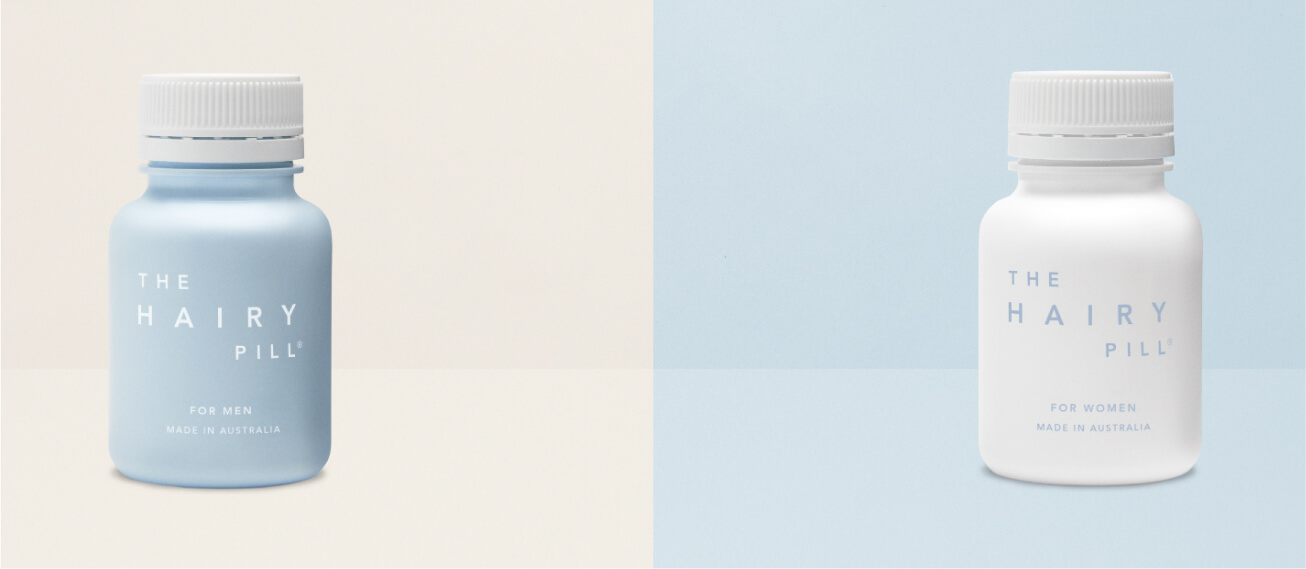Balding Crown? How to Spot, Stop & Reverse It
It can be easy to get away with hair loss in the beginning. Thinning hair, even a receding hairline, can happen so gradually that you might be the only one who notices anything.
But hair loss can eventually lead to a balding crown — especially if you’re male. Although rare, balding can also happen to women.
Fortunately, there are ways to prevent this kind of hair loss and even reverse it. In this article, we’ll take a look at the signs and stages of crown balding, as well as what causes it and, best of all, how you can stop balding.
If you’re worried about ending up with crown hair loss, it’s best to consult a doctor so you can access the best treatment for baldness that’s right for you.
So What Causes Baldness?
Most of the time, hair thinning at the crown can be attributed to genetics. However, there may be other causes of baldness, including prescription medication or even stress.
Genetic Balding (Male Pattern Baldness)
The leading cause of a balding crown is genetics. According to the American Hair Loss Association, up to 95% of male hair loss is hereditary.
Hereditary hair loss, called androgenetic alopecia or male pattern baldness (MPB), occurs when your body is genetically sensitive to a hormone called dihydrotestosterone (DHT). DHT has been found to shrink hair follicles, impairing their ability to produce new hair.
Read more: What is male pattern baldness?
Prescription Medication Side Effects
Some prescription medications include balding as a possible side effect. The most common of these are chemotherapy drugs, which can trigger anagen effluvium hair loss.
Hair loss related to chemo can occur quickly — usually within two weeks of starting therapy, though it only progresses rapidly after one or two months.
Other medications that may cause hair loss include:
- Weight loss medication
- Steroids
- Immunosuppressants
- Beta-blockers
- Non-steroidal anti-inflammatory drugs (NSAIDs)
- Thyroid medication
Can Stress Cause Balding?
Balding due to stress is possible. A sudden, dramatic stress on the body, such as an illness or a death in the family may cause a type of hair loss called telogen effluvium.
This condition causes hair follicles to prematurely enter a resting phase. A few months later, the impact of that stress will be visible in sudden hair shedding.
Alternatively, stress may translate into a mental health disorder called trichotillomania, where you can’t resist the urge to pull out your hair. This can lead to clumps of bald spots rather than a balding crown.
Medical Condition
Certain medical conditions can also cause hair thinning at the crown, especially if they disrupt the hormones or scar the scalp.
Here’s a short list of medication conditions that may cause hair loss in men:
- Thyroid disorders
- Anaemia
- Ringworm
- Scalp infections
- Sexually transmitted infections
- Psoriasis
- Seborrheic dermatitis
- Diabetes
- Lupus
- Hodgkin’s Disease
- Hypopituitarism
- Coeliac Disease
- Trichorrhexis Invaginata
- Addison’s Disease
- Lichen Planus
- Scleroderma
- Trichotillomania
Alopecia areata is important to mention because it’s the second most common type of hair loss after male pattern baldness. This autoimmune disease occurs when your own immune system attacks your hair follicles, causing round bald patches.
Tight Hairstyles
Tight buns, cornrows, braids, weaves, and dreadlocks can all stress your roots so much that it damages them, causing a type of hair loss called traction alopecia.
If you have wispy hair near the forehead or bald patches where your hair is usually pulled, you may have traction alopecia.
In most cases, your hair can regrow if you ditch the over-styling and let your hair down. However, if your follicles are severely damaged, your hair loss may be permanent.
Discover if The Hairy Pill® is right for you.
Take our short hair health quiz and we will work out if The Hairy Pill® can help you and your hair.
Take the quizCommon Signs of Balding — Are You Going Bald?
Your crown is at the vertex of your head — virtually the trickiest spot to glimpse without some clever mirror work. You might not even notice your hair thinning there until you feel the smooth pate where hair used to be.
Confirming that you have a bald spot is the first step to prevention and treatment. And the sooner you start on hair products for balding, the more effective the results can be.
Thankfully, the early signs of balding are easier to spot. These include a receding hairline (where the hair on the front and sides of your head begins to move further back off your face) and thinning hair (which may be diffused across your entire head or localised to the temples or top of your head).
Read more: These are the early signs of balding
In more good news, there’s an identifiable pattern for male pattern baldness, which culminates in balding at the crown. Understanding this progression might help you catch your hair loss before you go bald.
Crown Balding Stages: From Hairy to Barely There Hair
Crown balding often occurs in stages, which can help you detect the level of hair loss you’re experiencing. Male hair loss is clinically measured by the Norwood Scale, the same scale we use to assess your hair loss when you fill out our form to access The Hairy Pill® treatment.
There are 7 simple stages of hair loss in the Norwood Scale:
Stage 1: Your hair shows no visible signs of balding or thinning.
Stage 2: You may notice a mild case of a receding hairline at the temples.
Stage 3: Your receding hairline becomes more visible at the temple in an M, V, or U shape. This is where bald spots may develop. Alternatively, your hairline recession may remain mild but with substantial crown balding.
Stage 4: You’ve lost most of the hair on top of your scalp, with a narrow band of hair linking patches around the sides of the head.
Stage 5: The narrow band around your head thins as your areas of hair loss grow.
Stage 6: Any band of hair on top of the scalp is nearly or totally gone. Hair loss from the temples reaches the crown.
Stage 7: You may have a bald head on top, possibly with some hair still at the back and sides of the head.
Fortunately, if you’re still in the early stages of balding, there’s hope. It can be reversed. But the only way to know how much hair you can regrow is to start treatment.
Read more: Hair loss stages for men
Ready to start your hair growth journey?
- Free express shipping
- Unlimited doctor consultations
- Simple once a day treatment
How Can I Stop Balding?
If you’re starting to develop hair thinning at the crown, or you’ve detected the telltale signs of early hair loss, don’t panic. You’ve already taken the first big step towards treating baldness.
There’s no such thing as a best cure for baldness, since many factors may influence your hair loss. But combining some of the methods we mention below may give you the best chance of stopping or even preventing baldness.
We’ll start with how to stop balding naturally before taking a look at stronger hair products for balding and even medical procedures.
Consult a Hair Loss Doctor
As soon as you notice your hair thinning, take action by booking a consultation with a hair loss expert. The earlier you start treatment, the better. Leave it too late and your hair loss may be permanent.
Book a consultation through The Hairy Pill® and you’ll be able to talk to Australian doctors who have been trained by world-renowned dermatologist Professor Rodney Sinclair. He’s the doctor behind the underlying technology in The Hairy Pill® hair loss treatment.
Our partner doctors can help you get to the root of your balding problem and provide recommendations on the best way to stop balding.
Eat the Best Foods to Prevent Balding
A good start is to make sure you’re eating a healthy and nutritional diet packed with some of the best foods to prevent balding.
Your hair follicles need a steady stream of nutrients to grow healthy hair and certain foods deliver vitamins and minerals that are particularly good for this. These include eggs, sweet potato, fatty fish, red meat, beans, avocados, berries, nuts and seeds, and spinach.
Changing your diet won’t deliver an overnight transformation and is generally not considered an effective way to stop balding. But it may contribute to healthier, stronger, and thicker hair in the long term, potentially serving as a way to prevent balding from malnutrition in the first place.
If your body is struggling with hair loss because of a vitamin deficiency, you may need to take a supplement to give your body a helping hand.
Take Hair Growth Supplements
A glance at the health food aisles suggests there are just as many different types of natural hair growth products for balding as there are hairs on your head (OK, slight exaggeration — the average human head sports about 100,000 hairs).
These supplements all contain blends of vitamins and minerals to help your hair grow — including biotin, vitamin E, vitamin C, vitamin D, iron, zinc, and keratin.
In 2022, researchers conducting a systematic review of 30 studies concluded that a range of popular hair growth supplements were proven effective for select patients with hair loss. Plus adverse events were few and far between.
That said, vitamin and mineral supplements are generally safest and most effective when they address a specific nutritional deficiency. So we recommend a more personalised approach.
The Hairy Pill® can be compounded with a unique blend of vitamins and minerals chosen specifically for you — true personalisation to ensure you are only getting the nutritional support you need.
Try Hair Loss Medication
The only approved prescription bald hair growth products are finasteride and minoxidil.
Finasteride is a go-to treatment for men’s hair loss. This oral medication works by blocking the hormone responsible for hair loss. Studies consistently show it can help halt hair loss and even promote regrowth.
Meanwhile, minoxidil boosts blood flow around hair follicles, ensuring they get essential oxygen and nutrients. Available as a topical or oral treatment, it shifts hair into its growth phase faster and keeps it there longer, encouraging regrowth.
If you would like to know what ingredients are often included in The Hairy Pill®, don’t hesitate to reach out.
Hair Transplant Surgery
A hair transplant is often considered a last resort for restoring hair when your follicles are beyond repair.
This costly and sometimes painful procedure involves taking skin with healthy hair follicles — usually from the back of your scalp — and grafting it onto bald areas. Once the transplanted area heals, the new follicles should start growing hair in their new spot.
Heathline reports that anywhere from 10–80% of the transplanted hair will fully grow back, although it will thin over time.
The most common side effect is scarring but patients may also experience infections, scalp pain or itching, bleeding, numbness around the surgical site, and folliculitis, among other things.
Platelet-rich Plasma (PRP)
This cosmetic procedure involves injecting concentrated platelets into the scalp across multiple sessions. The goal? To boost blood flow and support healthier, stronger hair follicles.
Preliminary studies suggest that it may have some success in helping to regrow hair but as it’s a relatively new treatment, we need more research to be sure.
Side effects may include burning, bruising, intense itching, dryness, swelling, puffiness, or redness.
Low-level laser therapy (LLLT)
Low-level laser therapy uses red light waves to help reduce inflammation and promote tissue repair and regeneration. Although it may be effective for treating hair loss, more studies are required to determine its long-term effectiveness.
In 2021, Indian dermatologists Dr Pillai and Dr Mysore reviewed 15 studies on LLLT and concluded more than half of the studies had some efficacy in treating androgenetic alopecia — and the most effective approach was to have repeated treatments of LLLT.
Complications from the therapy may include burns, infections, depigmentation, scarring, acne, milia, contact dermatitis, and more.
Prevent Crown Balding Today with The Hairy Pill®
It’s not too late to turn things around. The Hairy Pill® provides hair loss treatments for men that can help stop balding in its tracks and stimulate hair growth. We also have women’s hair loss treatments.
Both treatments use Professor Sinclair’s underlying technology, which has been researched, tested, refined, and patented. Through regular doctor consultations, our partner doctors can track your progress and adjust your dose or ingredients based on your response to treatment.
And the best bit? It involves just one pill, taken daily, and delivered directly to your door. Start now.















